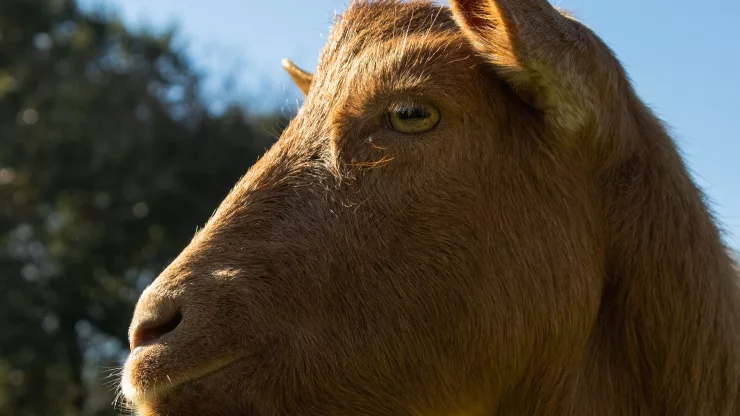As our world becomes increasingly urbanized, it is more important than ever to promote sustainable practices and support local food systems.
Urban wildlife and urban agriculture are two crucial components of this movement, working together to create a healthier and more sustainable environment.
In this article, we will explore the importance of urban wildlife and urban agriculture, their benefits and challenges, and share examples of successful projects.
Jump to Section
Introduction
What is Urban Wildlife and Urban Agriculture?
Urban wildlife refers to the animals that live in and around urban areas, including birds, insects, rodents, and larger mammals like deer and coyotes.
Urban agriculture, on the other hand, refers to the practice of growing and harvesting food in urban areas, often in community gardens or rooftop farms.
Importance of Promoting Local Food Systems
Promoting local food systems is essential for a number of reasons. By supporting local farmers and producers, we can reduce our carbon footprint and support sustainable agriculture practices.
Additionally, local food systems help to boost the local economy and promote community health by providing access to fresh, nutritious food.
Urban Wildlife: A Vital Part of Urban Agriculture
Understanding Urban Wildlife
Urban wildlife is an important part of the ecosystem in urban areas, providing a number of benefits for both humans and the environment.
These animals help to pollinate plants, control pests, and maintain a healthy balance in the ecosystem.
Benefits of Urban Wildlife in Agriculture
Urban wildlife can also provide valuable benefits for urban agriculture.
For example, bees and other pollinators are essential for many crops, while birds and other animals can help to control pests and improve soil health through their droppings.
Challenges Posed by Urban Wildlife
However, urban wildlife can also pose challenges for urban agriculture. For example, rodents and other animals may damage crops or eat the produce.
Additionally, some animals may pose a risk to human safety, such as coyotes or raccoons.
Urban Agriculture: Promoting Local Food Systems
What is Urban Agriculture?
Urban agriculture is the practice of growing and harvesting food in urban areas. This can include community gardens, rooftop farms, and even aquaponics systems in small spaces.
Advantages of Urban Agriculture
Urban agriculture has a number of advantages, including reducing food miles, providing access to fresh, nutritious food, and promoting sustainable agriculture practices.
Types of Urban Agriculture
There are many different types of urban agriculture, from community gardens to rooftop farms.
Some cities have even started to incorporate urban agriculture into their urban planning, creating green space and food production areas in residential and commercial areas.
Challenges Faced by Urban Agriculture
Urban agriculture also faces a number of challenges, including limited space, soil contamination, and zoning regulations. Additionally, urban agriculture may not always be financially viable for small-scale producers.
Benefits of Urban Wildlife and Urban Agriculture: Promoting Local Food Systems
Creating a Sustainable Environment
By promoting urban wildlife and urban agriculture, we can create a more sustainable environment by reducing our carbon footprint, supporting biodiversity, and promoting sustainable agriculture practices.
Supporting Local Economy
Local food systems can help to boost the local economy by supporting small-scale farmers and producers. Additionally, urban agriculture can provide job opportunities in urban areas.
Enhancing Community Health
By providing access to fresh, nutritious food, urban agriculture can help to enhance community health.
Additionally, community gardens and other urban agriculture projects can provide opportunities for social engagement and community building.
Urban Wildlife and Urban Agriculture: Challenges and Solutions
Balancing Urban Growth and Wildlife Conservation
As urban areas continue to grow, it is important to balance the need for development with the need to conserve urban wildlife.
This can be achieved through thoughtful urban planning and the incorporation of green spaces and wildlife corridors.
Strategies for Managing Urban Wildlife in Agriculture
To mitigate the challenges posed by urban wildlife in agriculture, there are a number of strategies that can be employed, including crop rotation, companion planting, and the use of physical barriers.
Overcoming Challenges in Urban Agriculture
To overcome the challenges faced by urban agriculture, it is important to develop innovative solutions, such as vertical farming and aquaponics systems.
Additionally, partnerships with local government and community organizations can help to provide resources and support for urban agriculture projects.
Examples of Successful Urban Agriculture Projects
| Project Name | Location | Description |
|---|---|---|
| The Rooftop Gardens | New York City | This project consists of a network of rooftop gardens throughout the city, producing fresh produce for local residents and restaurants. |
| The Urban Farm | Detroit | The Urban Farm is a community-led project that provides job training and educational opportunities through urban agriculture. |
| The Greenhouse Project | London | This project involves the construction of a large-scale greenhouse in the heart of the city, providing fresh produce year-round. |
The Importance of Urban Wildlife and Urban Agriculture in Promoting Local Food Systems
Urban wildlife and urban agriculture are two critical components of promoting sustainable practices and supporting local food systems.
By working together, we can create a healthier and more sustainable environment for all.
The Need for Sustainable Practices in Urban Development
As our world becomes increasingly urbanized, it is more important than ever to prioritize sustainable practices in urban development.
This includes promoting urban wildlife, supporting local food systems, and developing innovative solutions to the challenges faced by urban agriculture.
FAQ
What is the difference between urban agriculture and traditional agriculture?
Urban agriculture refers to the practice of growing and harvesting food in urban areas, often in small spaces like community gardens or rooftop farms.
Traditional agriculture, on the other hand, refers to the large-scale production of food in rural areas.
What are some of the challenges faced by urban agriculture?
Urban agriculture faces a number of challenges, including limited space, soil contamination, and zoning regulations. Additionally, urban agriculture may not always be financially viable for small-scale producers.
How can urban wildlife be beneficial for urban agriculture?
Urban wildlife can provide valuable benefits for urban agriculture, including pollination, pest control, and improved soil health through their droppings.
However, some animals may also pose a risk to human safety or damage crops.
I’m a nature enthusiast and creator of Metro Wilds and have spent years exploring the great outdoors.
With a passion for environmental conservation and sustainability, I have dedicated my career to writing about the beauty and wonders of nature, as well as the threats facing our planet.
Contact me at [email protected] for assistance.





